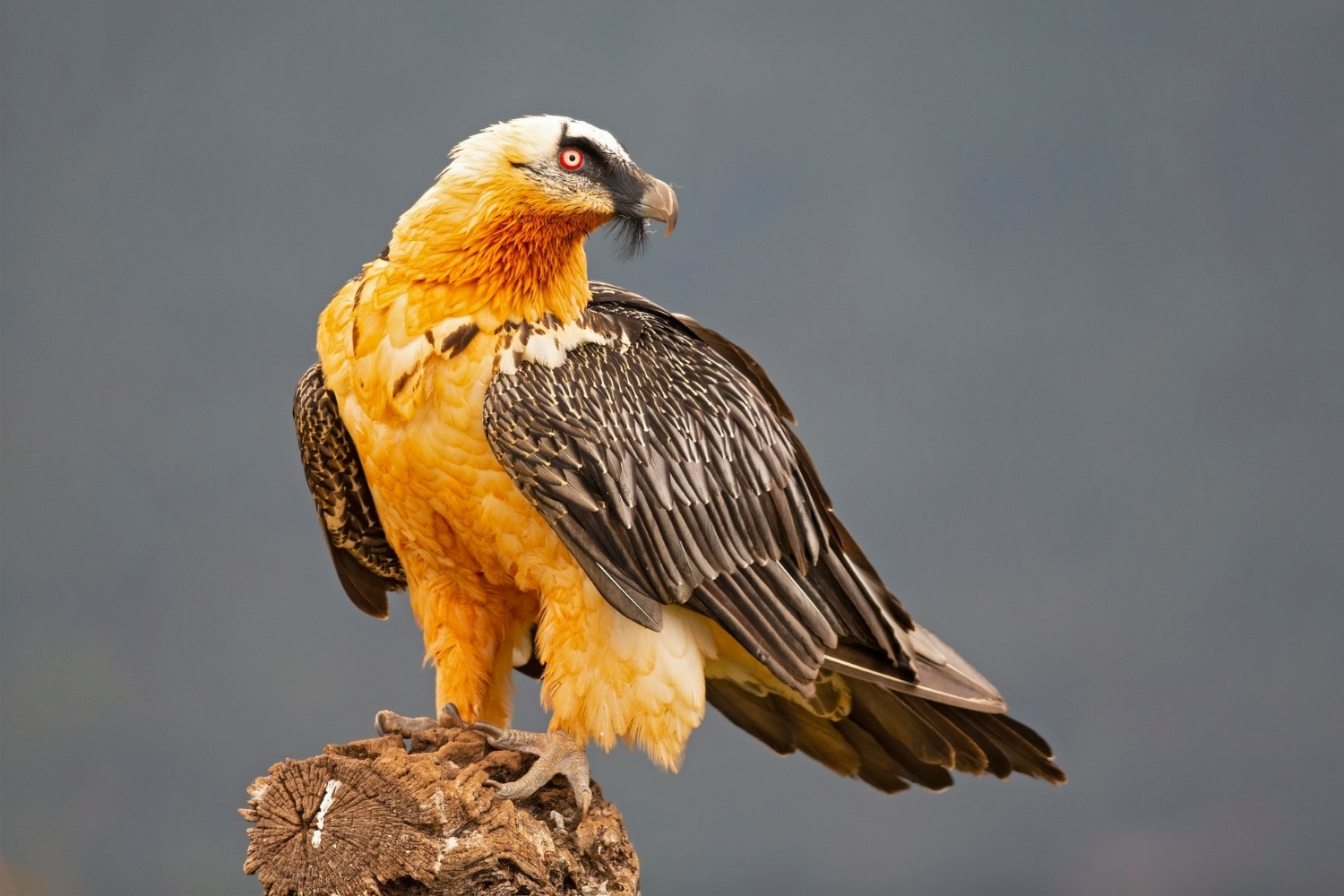
Why are Bearded Vultures so fascinating? These majestic birds, also known as Lammergeiers, are unique in many ways. Bearded Vultures are the only birds that primarily eat bones, making up about 70-90% of their diet. They have a wingspan of nearly 9 feet, allowing them to soar effortlessly over mountainous regions. Their striking appearance, with fiery red eyes and a "beard" of feathers, adds to their mystique. Unlike other vultures, they don't have bald heads. Instead, they sport a feathered look that sets them apart. These birds also play a crucial role in their ecosystems by cleaning up carcasses, preventing the spread of disease. Bearded Vultures are truly nature's recyclers.
The Majestic Bearded Vulture
The Bearded Vulture, also known as the Lammergeier, is one of the most fascinating birds of prey. With its striking appearance and unique behaviors, it captures the imagination of bird enthusiasts and nature lovers alike.
-
The Bearded Vulture is the only bird known to dye its feathers. They use iron-rich soil to stain their white feathers a rusty red color.
-
These birds have a wingspan that can reach up to 9.3 feet, making them one of the largest vultures in the world.
-
Unlike other vultures, Bearded Vultures primarily eat bones. They can swallow bones up to 10 inches long and digest them with their highly acidic stomachs.
Unique Feeding Habits
Bearded Vultures have some of the most unique feeding habits among birds of prey. Their diet and methods of obtaining food set them apart from other vultures.
-
They drop bones from great heights to break them into smaller, more manageable pieces. This behavior is known as "ossifrage."
-
Bearded Vultures prefer to eat the marrow inside bones, which is rich in fat and nutrients.
-
They have been observed using the same bone-breaking sites repeatedly, indicating a level of intelligence and memory.
Habitat and Distribution
Understanding where Bearded Vultures live and how they adapt to their environments is crucial for their conservation.
-
These vultures are found in mountainous regions across Europe, Asia, and Africa.
-
They prefer high-altitude habitats, often nesting on cliff faces to avoid predators.
-
Bearded Vultures are known to migrate short distances, usually moving to lower altitudes during the winter months.
Reproduction and Lifespan
The reproductive habits and lifespan of Bearded Vultures are as unique as their feeding behaviors.
-
They typically lay one to two eggs per breeding season, with both parents sharing incubation duties.
-
The incubation period lasts about 53 to 60 days, after which the chicks hatch.
-
Bearded Vultures can live up to 40 years in the wild, although their lifespan can be shorter due to environmental threats.
Conservation Status
Despite their impressive adaptations, Bearded Vultures face several threats that impact their survival.
-
They are currently listed as "Near Threatened" on the IUCN Red List due to habitat loss and poisoning.
-
Conservation efforts include habitat protection, anti-poisoning campaigns, and captive breeding programs.
-
In some regions, reintroduction programs have been successful in increasing their population numbers.
Cultural Significance
Bearded Vultures hold a special place in various cultures and mythologies around the world.
-
In Tibetan culture, they are considered sacred and are often depicted in art and folklore.
-
The ancient Greeks believed that Bearded Vultures were the guardians of Zeus' throne.
-
In some African cultures, they are seen as symbols of power and strength.
Physical Characteristics
The physical traits of Bearded Vultures make them easily recognizable and fascinating to study.
-
They have a distinctive "beard" of black feathers under their beak, which gives them their name.
-
Their eyes are surrounded by a ring of bright red skin, which becomes more vivid as they age.
-
Juvenile Bearded Vultures have darker plumage, which gradually lightens as they mature.
Behavioral Traits
The behaviors exhibited by Bearded Vultures are as intriguing as their physical characteristics.
-
They are known for their solitary nature, often seen alone or in pairs rather than in large groups.
-
Bearded Vultures communicate through a series of whistles and grunts, especially during the breeding season.
-
They are highly territorial, often defending their nesting sites aggressively against intruders.
Adaptations for Survival
The adaptations of Bearded Vultures have enabled them to thrive in some of the harshest environments on Earth.
-
Their powerful beaks and talons are perfectly adapted for breaking bones and tearing flesh.
-
They have excellent eyesight, allowing them to spot potential food sources from great distances.
The Bearded Vulture's Unique World
The bearded vulture stands out in the bird kingdom. Its diet mainly consists of bones, which it drops from great heights to crack open. This bird's striking appearance, with a wingspan reaching up to 9 feet, makes it a sight to behold. Found in mountainous regions across Europe, Asia, and Africa, it thrives in rugged terrains. Despite its intimidating look, the bearded vulture plays a crucial role in the ecosystem by cleaning up carcasses.
Conservation efforts are vital as this species faces threats from habitat loss and poisoning. Understanding and protecting the bearded vulture ensures the balance of nature remains intact. Next time you spot one soaring high, remember its unique habits and importance. The bearded vulture isn't just another bird; it's a fascinating part of our natural world.
Was this page helpful?
Our commitment to delivering trustworthy and engaging content is at the heart of what we do. Each fact on our site is contributed by real users like you, bringing a wealth of diverse insights and information. To ensure the highest standards of accuracy and reliability, our dedicated editors meticulously review each submission. This process guarantees that the facts we share are not only fascinating but also credible. Trust in our commitment to quality and authenticity as you explore and learn with us.
